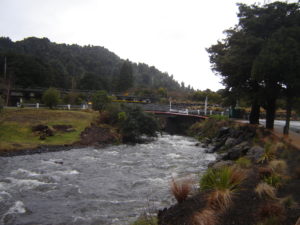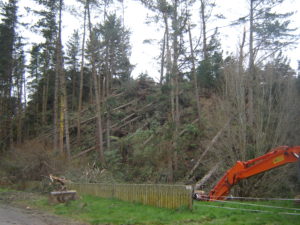Claiming to protect the public’s purse is always great politics, at least in some quarters. Actually doing so requires considerable thought and homework, but grandstanding is cheap and makes for great sound bites in an election season. And thus, it is often silly season not only in Congress, but in many of America’s state legislatures.
I say this because a legislative alert from the Illinois chapter of the American Planning Association (APA), of which I have been a member for decades, turned my attention to an attempt in three pending bills to prohibit (HB4246) the use of local government funds “for expenses connected with attendance by an employee or contractor of the unit of local government at a convention or gathering of personnel.” HB4247 disallows spending on “access to physical space for booths, hospitality suites, or other physical space” at such events. All three bills, HB4246, 4247, and 4248, create the Local Government Convention Expense Control Act, sponsored by Rep. David McSweeney, a Republican conservative from the collar counties north of Chicago. A quick check on McSweeney in Wikipedia illustrates a history of such initiatives, some of which may make sense, but this one is clearly a case of tossing out the baby with the bath water. That said, he has a number of co-sponsors including some Democrats.
I have no problem with appropriate limits on the ways in which public funds are used for conventions and conferences. Public money clearly should be used for sensible and responsible purposes at such events. But I have attended and presented at dozens of professional conferences involving local and state government professionals all across the United States, and I have yet to see anything highly or even mildly inappropriate. When such outrages do occur, they tend to find their way into mass media coverage that goes viral, and heads roll, but such incidents are extremely rare, which raises the question of the necessity of the proposed legislation.
There is a reason for professional conferences that involves an intelligent use of public money. If we can at least accept the notion that we want our professional public servants—planners, financial officers, civil engineers, transit officials, and others—to be well informed and up to date on best practices in their fields—then there is a solid argument for affording them the opportunity to attend professional conferences at which they can attend sessions and workshops and learn. What they bring back to their jobs enhances the service they provide on their jobs.
In my own role, I was usually speaking or attending as an employee of a national nonprofit professional association, APA, most of whose members work in the public sector. Many of the rest are consultants, professors, or land-use attorneys, but there are numerous special niches in which people find useful employment. I did not attend state or regional conferences for urban planners, floodplain mangers, and other professional groups for the social opportunities. I can think of much better forums for enhancing that aspect of my life. I was typically either trying to learn something that would make me a better manager for the research and training projects I was leading, or because I was presenting information in a session or as a keynote speaker. Urban planning, for example, is a rapidly evolving field of practice. Being denied access to the networking and learning opportunities afforded by such gatherings is a blow to the professionalism of the dedicated public servants who work for local government. The alternative—to say that they must spend their own money to attend, which some do anyway—is to drive the best of them away from the public sector to firms that offer such opportunities as a means of maintaining a top-flight staff. It is as much a question in job interviews as compensation or prospects for advancement.
Let me offer a couple of minor examples to make my point. Just three years ago, I attended the Illinois APA conference to present findings from a national study APA’s Hazards Planning Center had completed with support from the Federal Emergency Management Agency (FEMA) on planning for post-disaster recovery. Sharing the podium for the session was Jon Oliphant, the planning director of Washington, Illinois, a Peoria suburb, which was struck by an EF-4 tornado in November 2013. He complimented my presentation with real-life details of the rebuilding experience in Washington since that event. For the people in that room, many of whom had not experienced a similar disaster in their own communities, but worried about the day they might, it would be hard to replicate the value of being able to hear all this first-hand and to “kick the tires” by asking questions of the panel. The modest expense of attending that two-day conference, within driving distance for many registrants, must be weighed against the considerable value of the knowledge and insights they gained from not only that session but many others they undoubtedly attended while there. The same could largely be said whether the topic is stormwater drainage, public finance, or economic development. If many people later exchanged business cards over drinks and snacks at a reception (typically sponsored by exhibitors), so what? In most cases, in my experience, it was an opportunity to chew over and compare impressions of what they had heard and discussed throughout the day.
In another example, Chad Berginnis, the executive director of the Association of State Floodplain Managers, and I tag-teamed an opening keynote for the Illinois Association for Floodplain and Stormwater Management. Our topic was a forthcoming report, also supported by FEMA, on subdivision design and flood hazard areas. How do we better design and review new developments to minimize or avoid damage from floods? The annual losses from poor handling of this issue can easily exceed any costs associated with anyone’s attendance at that event. It is important that our planners, engineers, and floodplain managers be aware of current best practices in this field. Impoverishing access of such public employees to professional education simply weakens the expertise and knowledge base of the people a city employees.
Simply put, if we are going to insist that public employees do their jobs well, we need to do two things. One, which is the diametrical opposite of what bills like these would achieve (and such proposed legislation is hardly limited to Illinois), is to ensure that our public servants have meaningful opportunities to improve their skills, to say nothing of meeting continuing education requirements for professional certification in their fields. The other is to insist that legislators do their own jobs by making an honest effort to determine whether their proposed legislation helps enrich the quality of service these employees can offer or is a simplistic smoke screen for being too intellectually lazy to undertake an honest evaluation of the true impact of their proposals. I repeat: This is yet another case of throwing the baby out with the bath water. It offers false economies that undermine the value of public service. Taxpayers do not gain; they lose.
Jim Schwab


